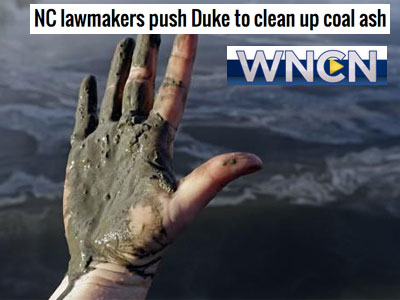News has been coming thick and fast the last few weeks, so you might have missed the uproar over the coal ash spill in North Carolina. According to the Raleigh News & Observer, coal ash – a byproduct of burning coal for energy production – escaped from a Duke Energy storage facility on Feb. 2 and is now some 80 miles downstream of the spill.
As the Associated Press reports, the state of North Carolina put on hold a $99,000 settlement it had reached with the $50-billion company over previous pollution charges; the state had blocked lawsuits by environmental groups in favor of the proposed settlement, which does not require that Duke clean up its ash dumps.
The accident highlights an environmental issue that exists in every state; you might want to springboard off the headlines to take a look at the prevalence of coal ash dumps in your region for a “Can it happen here?” look at what regulators, environmental advocates and the energy producers are doing to prevent or ameliorate pollution.
Obviously start with your state’s public service commission and department of natural resources
The U.S. Environmental Protection Agency embarked on a project several years ago – after a notorious coal ash spill in Tennessee – to evaluate what it calls “coal combustion residual impoundments” (CCR impoundments) nationwide. (Coal ash often is stored in ponds or lagoons, in the form of a sludge or slurry which environmental groups say is teeming with toxins such as arsenic and led; this Sierra Club briefing paper cites an EPA study as finding that living near a coal ash facility is more dangerous than smoking a pack of cigarettes a day. Not to mention the dangers to fish and wildlife.) Currently the disposal of coal ash is not federally regulated and critics say state oversight can be lax; the EPA has proposed a rule that would allow it oversight of the coal ash disposal.
Meanwhile, you can review this EPA database of letters to states on the status of their CCR facilities.
And the environmental advocacy group EarthJustice has published an interactive map showing coal ash dump sites nationwide; you might be surprised at how many are in your state. The links to the map indicate the related electricity plant, city and operator of each site, in addition to notes on hazard concerns.
The Sierra Club also has posted a map showing coal ash waste ponds.
Other groups like Clean Water Action and the Southern Environmental Law Center are resources on coal ash issues and might be able to point you to pending lawsuits, if any, in your state or region.
Check in with your area universities’ schools of natural resources for other experts. From the industry side, the American Coal Ash Association represents member utilities and other companies.
Note that the Associated Press article I referred to above also makes mention of campaign finance contributions made by Duke Energy and its PACs to North Carolina’s governor; you can follow similar financial trails in your own market via OpenSecrets.org.











